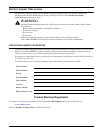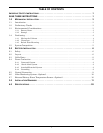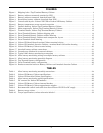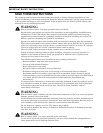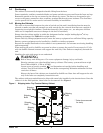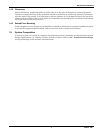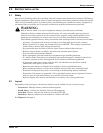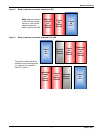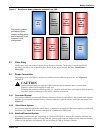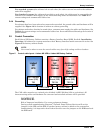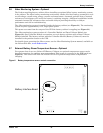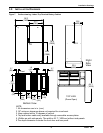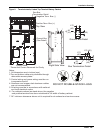
Battery Installation
Liebert
®
NX
™
6
2.0 BATTERY INSTALLATION
2.1 Safety
Special care should be taken when working with the batteries associated with the Liebert NX Battery
System equipment. When all the cells are connected together, the battery terminal voltage will exceed
400V and is potentially lethal. A primary safety consideration is to install the battery equipment in
an isolated area, accessible only to properly trained and qualified maintenance personnel.
2.2 Layout
Depending on the site layout, the battery cabinets can be installed in any of several ways:
• Connected—Multiple battery cabinets bolted together
• Stand-Alone—Cabinet not bolted to Liebert NX equipment
• Attached—Battery cabinets are bolted to a Liebert NX UPS
• Detached—Battery cabinets are not bolted to a Liebert NX UPS
See Figures 2 through 4.
!
WARNING
Risk of electric shock. Can cause equipment damage, personal injury and death.
Hazardous battery voltage present behind covers. No user-serviceable parts are located
behind covers that require a tool for removal. Only properly trained and qualified service
personnel are authorized to remove such covers or perform installation or maintenance.
The following general battery safety precautions and warnings must be observed at all times:
• A battery can present risk of electric shock or burn from high short circuit currents.
• When connected in a string, the voltage will exceed 400VDC. This voltage is potentially
lethal. Always observe high-voltage precautions.
• Eye protection must be worn to prevent injury from accidental electrical arcs.
• Remove rings, watches, necklaces, bracelets and all other metal objects.
• Use only tools with insulated handles.
• Wear appropriate personal protective equipment when handling batteries.
• If a battery leaks electrolyte or is otherwise physically damaged, it should be placed in a
container resistant to wire and disposed of in accordance with local regulations.
• If electrolyte comes into contact with the skin, the affected area should be washed
immediately with plenty of clean water.
• Batteries must always be disposed of according to local environmental laws.
• When replacing batteries, use the same number and type that were originally fitted.
• Disconnect charging source prior to connecting or disconnecting battery terminals.
• Determine if the battery is grounded. If it is grounded, remove source of ground. Contact
with any part of a grounded battery can result in electrical shock.
• Battery support tray must be used whenever a battery tray is being pulled out.



